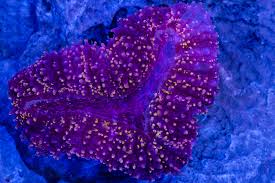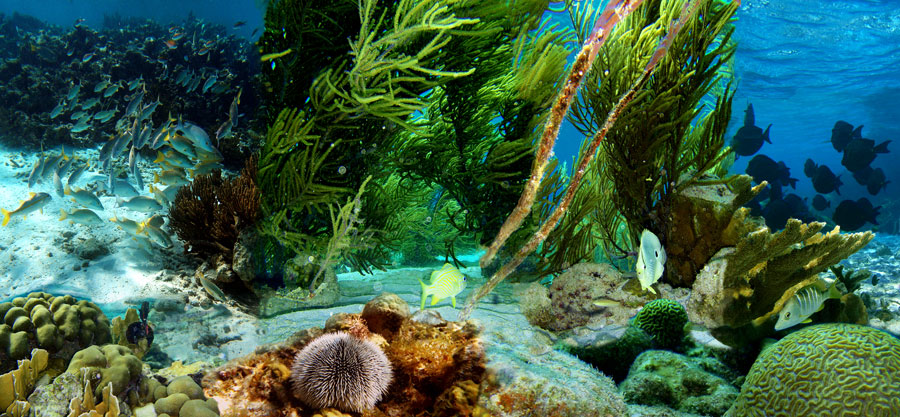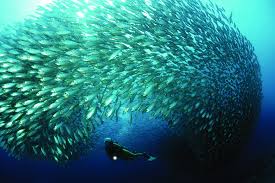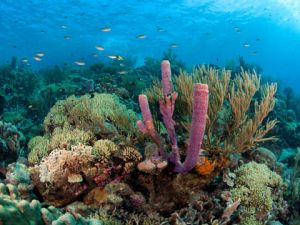
Called “The “Diver’s Paradise,” in fact this has been Bonaire’s license plate slogan for decades now, Bonaire Reefs in the Dutch Caribbean has been attracting more tourists lately. At night, they flood the reef waters with blue light so divers can catch a glimpse of a whole new underwater world, that glows and shimmers in neon blues, yellows, greens, lavenders, and pinks.
Famous Crystal-Blue Waters
The super-clear waters of Bonaire have made it famous for decades though now. Because Bonaire lies in a very arid Caribbean region, the waters and sea floor are undisturbed by currents, rain, or wind (hence the name “Bon (good) Air-e.” These factors make the area a favorite of divers and photographers alike.
Reef Composition
Bonaire Reef is one of a triage of islands known as the ABC Islands (Aruba and Caraco). The islands rest off the northern tip of South America, and east of South America. Bonarie has a population of some 17,000 inhabitants. Bonaire is a municipality in the Netherlands.

Marine Life
But Bonaire has been a diver’s favorite for decades now. Bonaire has valued their tourists and preservation of their waters above all other issues, and therefore, you are in for a quiet, beautiful adventure in these waters. Bonaire was one of the first coral reef tourism sites to realize the value of preservation and were one of the first sites to install permanent moorings of their reefs to enhance long-life and stability. The fish here are even friendly, calm and easily photographed.
There is no risk of large, intimidating fish here, as they do not frequent the waters here. But you will find plenty to see in hard and soft corals, beautiful angelfish, huge groupers, sea turtles, butterfly fish, sea horses, shrimp and crabs. Less often visitors include dolphins, nurse and whale sharks.
Untouched and Pristine: The Healthiest Reef in the Caribbean

Bonaire is also referred to as “The Last Healthy Reef in the Caribbean, Although 60% of living Caribbean corals have disappeared due to both climate changes and human error (overfishing, destructive fishing, etc..), Bonaire, because it began preserving its reefs early, has suffered little coral loss.
In 1961, when other coral reefs were being pillaged and exploited, Bonaire began taking steps to preserve seas turtles and other marine life and by 1979, had legislation in place to designate its coral reefs as a National Marine Park to preserve its unique beauty—and it has worked. The reefs here remain untouched and unspoiled. Visitors and residents here get to virtually travel back in time to a place in nature undisturbed by human hands and handiwork.

While examining a star coral in the Bonaire Reef system, Andrew Bruckner, a coral biologist leading an intensive survey of Bonaire’s reefs, notes that “This is one of the last places in the Caribbean where you can see really big star corals [some that are] 600 to 800 years old.”
However, this healthy state is somewhat of a mystery to scientists, who desperately want to figure out what sustains this reef system so that we might recreate these conditions in other reefs. As Brukner says,
Bonaire’s reefs are in better shape than any Caribbean island by far. The big question is why?’ ‘If we can figure out why Bonaire is in such good shape, we can give other Caribbean islands the tools they need to bring back their reefs before they disintegrate.”
